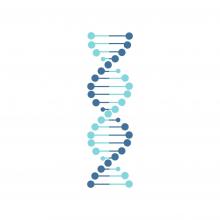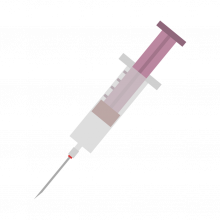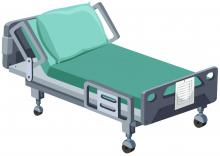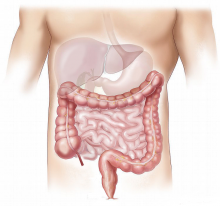חדשות המחקר

David Karasik: A genome-wide scan for pleiotropy between bone mineral density and nonbone phenotypes (Bone Res .)
Osteoporosis is the most common metabolic bone disorder globally and is characterized by skeletal fragility and microarchitectural deterioration. Genetic pleiotropy occurs when a single genetic element is associated with more than one phenotype. We aimed to identify pleiotropic loci associated with bone mineral density (BMD) and nonbone phenotypes in genome-wide association studies.

David Carasso, Shemy Carasso: The Mechanical Cost of Decreasing Conduction Velocity: A Mathematical Model of Pacing-Induced Lower Strain (J Atr Fibrillation .)
To simulate the effect of decreasing conduction velocity (Cvel) on average segmental myocardial strain using mathematical modeling.

Tal Shachar: Reconstructive Microsurgery in the COVID-19 Environment (Plast Reconstr Surg Glob Open . )
The COVID-19 pandemic has presented unique challenges to the plastic surgery field. Substantial changes have been incorporated in hospital and practice protocols in all branches of medicine. Organic medical teams were placed on scheduled shifts to prevent cross-infection, and some working teams were discontinued. Remote technology consultations and deliberations were instituted in hospitals and community medical services to maintain the flow of information on patient status. Several mitigation strategies were implemented during these times throughout medical facilities. We present those implemented in our facility to ensure adequate labor, resources, and facilities along with proper protocols for patient selection and management according to predetermined risk assessment criteria with the hope to assist the healthcare staff to minimize mortality risks.

Tomer Meirson: Informative censoring of surrogate end-point data in phase 3 oncology trials (Eur J Cancer . )
Kaplan-Meier (K-M) analysis, the cornerstone of cancer clinical trial interpretation, assumes that censored patients are no more or less likely to experience an event than those followed. We sought to investigate the patterns of censoring in surrogate end-points of oncology randomised controlled trials (RCTs) and examine the relationship between censoring in practice-changing treatments that failed to demonstrate survival gain.
Ben Shabat Moti, Eliya Oz, Azrilin Olga , Gross Bella, Sela Shifra, Palzur Eilam: New Cortical Neurodegenerative Pathways in the Hypertensive Rat Brain (Cereb Cortex . )
Hypertension is a risk factor for neurodegenerative diseases. We hypothesized that chronic hypertension underlies neurodegeneration. In this study, we examined the expression of brain cortical proteins involved in homeostasis, apoptosis, and brain functions in Spontaneously Hypertensive Rats (SHR) compared with normotensive Wistar-Kyoto (WKY) rats.

Arik Sheinenzon, Mona Shehadeh, Michelis Regina, Ety Shaoul, Ohad Ronen: Serum albumin levels and inflammation (Int J Biol Macromol . )
Albumin is the most abundant protein in the plasma and has a regulatory role in the distribution of body fluids, acid-base physiology, and binding of essential components in the bloodstream. C-reactive protein (CRP) is produced by hepatocytes and is commonly used to assess inflammation. It was previously noted that acute-phase concentrations of proteins, such as CRP, tend to rise in inflammatory conditions, while albumin concentrations tend to decline. This study assessed the correlation between albumin levels and various inflammatory indices (CRP, WBC, PLT) of patients hospitalized at the Galilee Medical Center over a period of 3 months.

Sofia Soltsman, Yeela Tomsis, Anat Konforty, Izhar Ben Shlomo: The Impact of Prenatal Depression in Patients of High Risk Pregnancy Clinic on Obstetric Outcomes (Psychiatr Q . )
Prenatal depression is common and has been associated with risky maternal behavior, postpartum depression, and atypical child development. Still, its association with adverse perinatal outcomes is complex. The aim of our study was to look for this potential association in our region.

Boris Fichtman, Amnon Harel: Expanding the phenotype of NUP85 mutations beyond nephrotic syndrome to primary autosomal recessive microcephaly and Seckel syndrome spectrum disorders (Hum Mol Genet . )
Primary autosomal recessive microcephaly and Seckel syndrome spectrum disorders (MCPH-SCKS) include a heterogeneous group of autosomal recessive inherited diseases characterized by primary (congenital) microcephaly, the absence of visceral abnormalities, and a variable degree of cognitive impairment, short stature and facial dysmorphism. Recently, biallelic variants in the nuclear pore complex (NPC) component nucleoporin 85 gene (NUP85) were reported to cause steroid-resistant nephrotic syndrome (SRNS). Here, we report biallelic variants in NUP85 in two pedigrees with an MCPH-SCKS phenotype spectrum without SRNS, thereby expanding the phenotypic spectrum of NUP85-linked diseases.

Omri Levor, Jacob Bornstein: Outcomes of a fixed skeletonised mini mesh implant for pelvic organ prolapse repair with uterine preservation (J Obstet Gynaecol .)
Mesh repair of pelvic organ prolapse (POP) is complicated, causing erosions, postoperative pain and surgical failure. We hypothesised that reducing the mesh size and fixating it would result in significant cure rates and reduce complication rates.

Samih Badarny: Long-term stable efficacy of botulinum toxin A in facial movement disorders with no need for increasing dose (Medicine (Baltimore) . )
Botulinum toxin A is considered an effective treatment for involuntary facial movements. We examined whether treatment efficacy maintained or changed over time with two products, Botox and Dysport, in patients with hemifacial spasm, facial synkinesis and benign essential blepharospasm.

Yaniv Hadi, Tsafrir Or, Gassan Moady, Shaul Atar: Psoriasis and Coronary Heart Disease - Not as Severe as Predicted (QJM . )
Psoriasis is a systemic disorder involved in several disease processes, including cancer, metabolic syndrome and cardiovascular disease (CVD). Previous studies showed that psoriasis is most likely an independent risk factor for CVD, yet the extent of its impact on CVD and the extent of coronary artery disease (CAD), remains unclear. We investigated the correlation of psoriasis to the severity of CAD in age and gender matched patients with CAD with and without psoriasis.

Michael V Joachim, Din Emm Richter, Aladdin Mohana, Musa Labeeb, Murad Abdelraziq, Imad Abu El-Naaj: Quality of Life After Class III Repair Orthognathic Surgery: Five-Year Retrospective Study (J Craniofac Surg .)
To evaluate the effect of orthognathic surgery on the long-term quality of life of patients with presurgical skeletal Class III and to identify its strongest effect-whether esthetic, social, or functional.

Khalaf Kridin: Immunological features and factors associated with mucocutaneous bullous pemphigoid - a retrospective cohort study (J Dtsch Dermatol Ges .)
The features of bullous pemphigoid (BP) patients presenting with mucosal lesions are not established. We aimed to elucidate the clinical and immunological features of BP patients with mucosal involvement, and to identify factors associated with mucosal lesions.

Evgenii Tikhonov, Sondra Turjeman, Omry Koren: Developmental intestinal microbiome alterations in canine fading puppy syndrome: a prospective observational study (NPJ Biofilms Microbiomes . )
Fading puppy syndrome (FPS) is a fatal condition in neonatal dogs. Intestinal microbial alterations, although never investigated, may be involved in its pathophysiology. The study examined the occurrence of FPS and its associations with dam, puppy, and husbandry characteristics, compared the intestinal microbial diversity of healthy puppies and those with FPS, and examined whether intestinal microbiomes are predictive of FPS.





